Micro Trains PS-1 Boxcar Rolls Towards Golden Anniversary
Published: 2020-01-17 - By: CNW400
Last updated on: 2021-08-12
Last updated on: 2021-08-12
visibility: Public - Headline
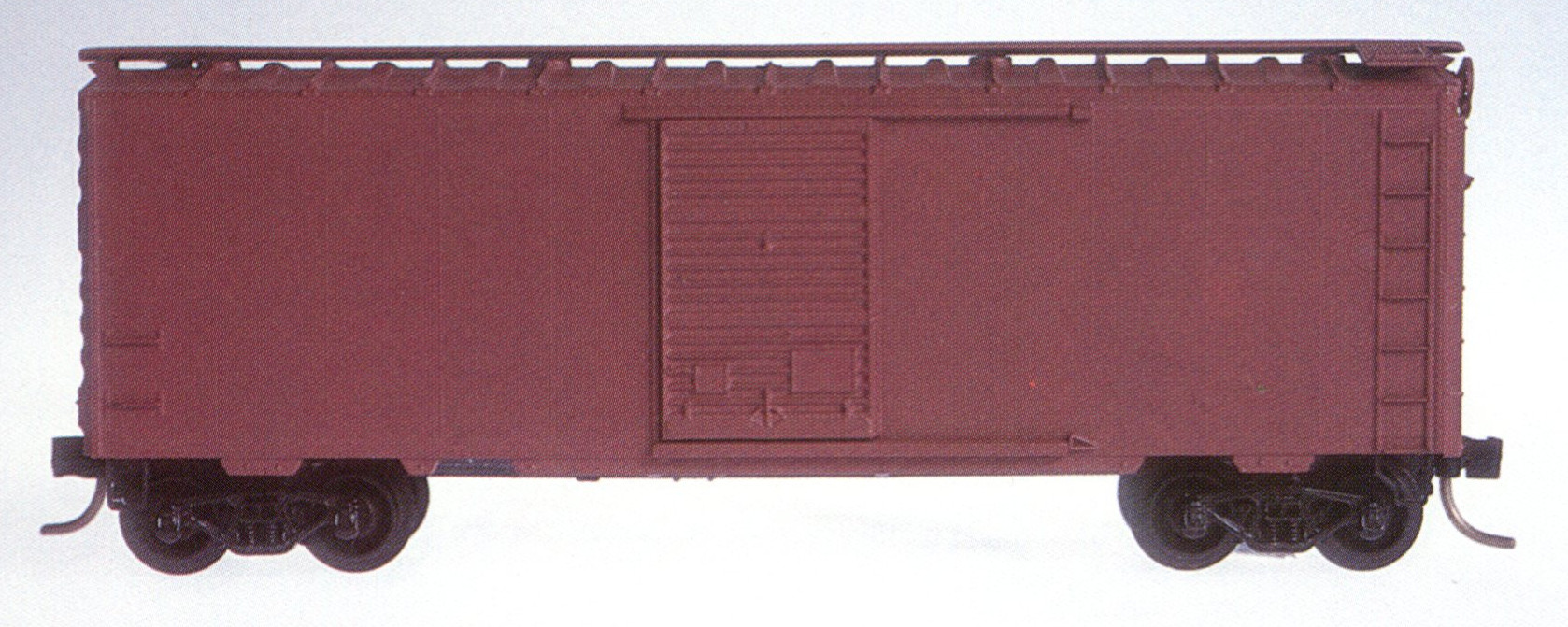
Part I: History of the Prototype
WHEN PULLMAN WAS A KING OF THE RAILROAD
As the railroads were converting from steam power to diesel during the ‘Transitional Era’ of the 1940’s, the freight car industry was experiencing a change of its own. The freight industry shifted away from the wood boxcar to an all-steel 40-foot design. Railroad shops were also beginning to retrofit their older wooden boxcars with new steel sides and ends. The company that emerged as the leader of this evolution was the Pullman-Standard Car Manufacturing Company and the release of their PS-1 boxcar.George Pullman incorporated the Pullman Palace Car Company in 1867 with its first plants in Detroit and Elmira, New York. Pullman manufactured and operated luxury sleeping cars on most of the United States railroads. By 1877, Pullman maintained 460 luxury passenger cars across America. His company also produced streetcars and trolley buses.
In 1929,during the Great Depression, Pullman gained controlling interest in the Standard Steel Car Company. The Standard Steel Car Company of Butler, Pennsylvania was established in 1902 and grew to become one of the leading steel car manufactures in the United States. In December of 1934, Pullman Car merged with Standard Steel Car to create the Pullman-Standard Car Manufacturing Company.
THE BIRTH OF THE PS-1 BOXCAR
The omnipresent PS-1 boxcar was produced from 1947 through 1968 with most of the cars having a length of 40’ and heights of either 10’5” or 10’6”. It has been reported that 79 railroad customers purchased the PS-1 with 22 railroads owing at least 1,000 boxcars and 5 (Chicago & Northwestern, Louisville & Nashville, New York Central, Rock Island & Southern) maintaining at least 5,000 cars. The PS-1 was the definitive freight boxcar during this era; used for general merchandise, grain, and even coke & coal.During the 1960’s production of the 40’ PS-1 slowed as the railroads gravitated towards the 50’ boxcar and commodity-specific specialized rolling stock. Pullman-Standard also offered 50’ and 60’ versions with the PS-1 designation. Records show that at the time of its demise in 1968, 76,848 (3.8% of the US rolling stock) PS-1 40’ cars were produced with many still in service throughout the 1980’s.
PULLMAN’S DESIGN
The PS-1 was based on the 1944 American Association of Railroads (AAR) industry standard, augmented with Pullman’s proprietary roof and car end designs. Although the early models were riveted, most PS-1 cars featured welded construction. The most prevalent door sizes were either 6’ or 8’ and common styles included Youngstown and Superior doors. The car was frequently painted ‘boxcar red’ with a variant in color from crimson red to dark brown. The boxcar could undergo subtle changes per customer request such as door size and style or applying a colorful paint scheme.The Pullman designed car ends had a unique series of wide rounded corrugations. Furthermore, another distinguishing trait was the ‘Bow-Tie’ roof panel appearance. The PS-1 roof panel raised sections were wider at the outside and become narrower at the roof peak creating the illusion of a bow-tie configuration.
The PS-1 began to experience considerable design changes in the early-1960s. The boxcars were fitted with shorter ladders, lower handbrakes and underwent removal of the roofwalk. The demand for the 40’ boxcar decreased throughout the decade as longer, bigger and more specialized rolling stock was requested by the rail customer. The last PS-1 boxcar to be produced was in 1968, part of an order of 25 cars for the Milwaukee Road - #’s 4600-4624.
Part II: THE EDWARDS BROTHERS REVOLUTIONIZE THE HOBBY
While the tale of PS-1 production ended in 1968, the story of one of the most familiar and successful N Scale models was about to begin.In 1940, twin brothers Keith and Dale Edwards created the Kadee Quality Products Company. Both were engineers and toolmakers by trade and designed their HO scale ‘operating magnetic coupler’. Their coupler system would become known for its excellent construction, ease of use and realistic prototypical operation. During the 1960’s Kadee began to develop a product-line of N Scale couplers and trucks. The couplers are known as the Magne-Matic® coupler and 2019 marked the 50th anniversary of the trademark!
Kadee Micro-Trains freight boxcars were first introduced to the model railroad hobby in November of 1972. The 20000 Series 40’ Standard Single Door Boxcar was inspired by the late 1950’s PS-1 steel rail car. Although fashioned after the PS-1, Kadee never marketed their model with that designation. This allowed Kadee, with its common roof, roofwalk and car end design of the Transition Era (1939-57), to quickly release several different variations of this model by substituting door configurations (single or double sliding door, plug door, combo, etc.).
The first release of the 40’ Boxcar included seven different models with a retail price of $3.00 or $3.25 for the two color stamped cars:
- 20000 Unlettered Light Brown
- 20000 Unlettered Tuscan Brown
- 20018 #516798 Grnd Trnk Western ($3.25 green & white)
- 20058 #27653 Rock Island
- 20089 #124239 Union Pacific (white lettering version)
- 20089 #124239 Union Pacific (yellow lettering version)
- 20093 #105043 South Pacific ($3.25 black & white)
A SIMPLE CONCEPT BUT CLASSICAL DESIGN
The paint is even along the entire model. The body and most of the details are all the same color. Lettering is neat and legible but every example I have seen has a muted, hazy print job. The lettering looks faded or washed-out. Not certain if that was by design or because of age and early stamping techniques.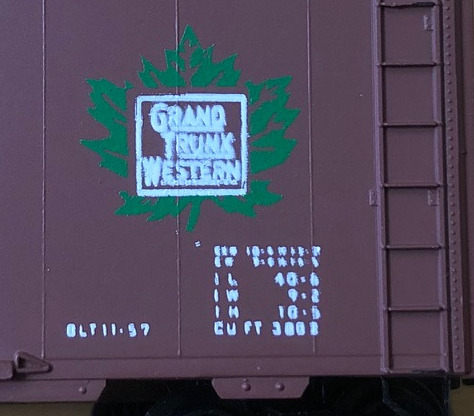
These seven cars featured operating 6’ Youngstown single sliding doors with low tack boards. Once the doors are slid open, a shiny metal weight plate is exposed with a vertical pattern to simulate wooden floor planks. This would need to be painted for more prototypical operations if running with the doors ajar.
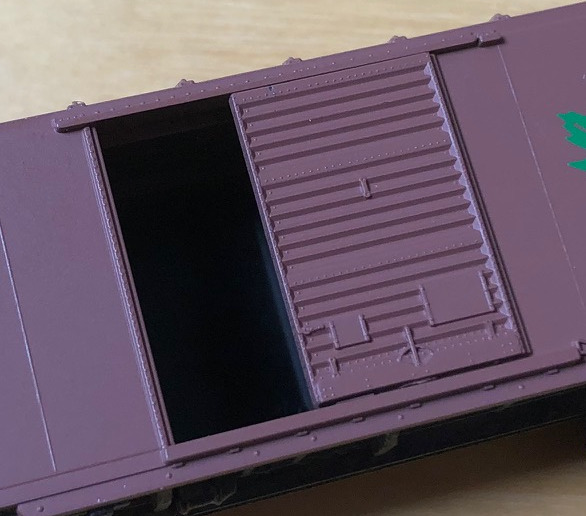
All of the detail pieces are molded onto the model. The sides have tall ladders, grab irons and stirrup steps. The stirrups are painted grey, the only detail pieces that are not the same color as the boxcar. The ends feature tall ladders, high tack boards and a high-mount brake wheel. The end with the brake wheel feature a brake chain, platform and cables. The other end also has a cable and tack board.

The top has a one-piece platform and diagonal roof panels. The underside is painted black and has all the basic molded details such as the brake cylinder, braking system components, stringers and cross bearers. Furthermore, the boxcar was fitted with Kadee magnetic couplers and black deep flange plastic wheels.
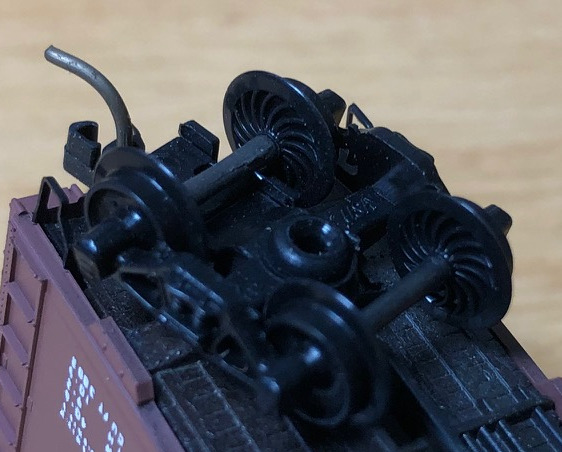
A rather basic entry into the model railroad hobby but that is part of the genius behind this classical design. It allowed Kadee Micro-Trains to release several different variations using the same body design and switching-out assorted parts to create a new series of rolling stock with relative ease. Add to that a superior coupler system and you have a product that has been beloved for almost 50 years.
SOME THINGS NEVER CHANGE
Fast-forward to 2020 and not much has changed.In 1990 Kadee Micro-Lines split into two separate companies. Brother Dale Edwards kept control of Kadee and their HO scale and up product. Keith Edwards founded Micro-Trains Line Inc. to market the N and Z scale lines of trucks, couplers and rolling stock. Inspecting a Micro-Trains Line 40’ Standard Boxcar released in 2016, these old eyes see very little change in this series. The tooling appears exactly the same, the biggest and most obvious advancements are the quality of the materials used and better lettering techniques.
ALL THE WAY WITH SANTA FE
I am using Micro-Trains Line 020-54-137 (Santa Fe - ATSF #142582) to compare with the original 1972 release. (Editor's Note: The photographer instead used a car from the 2019 B&O Sentinel Runner Pack).The Santa Fe model is housed in the typical clear plastic jewel case. It is labeled as a 40’ Standard Boxcar - Single Door. The car is painted Mineral Brown with white lettering and a black & white circle cross herald. The car has a built date of 1941 and was part of the Santa Fe’s ‘Slogan’ or “Map’ Car Series. The advertising campaign used from 1940 - 1947 featured a system map on one side and a route name on the other. The Map Series was replaced with the ‘Ship & Travel’ Series in 1947. This particular model represents The Super Chief California.
Since the Map Cars were released by Santa Fe in 1941 and the Pullman-Standard PS-1 wasn’t introduced until 1947, Micro-Trains Line couldn’t market these as a PS-1 model. This Santa Fe car is a Bx-37 boxcar built by Pullman-Standard in 1941-1942 and numbered 141301-144310 and 145500-147499. They were AAR standard steel cars with 5-5 Dreadnaught ends, which are incorrectly modeled on this MTL Santa Fe (which have a 4-5 end design). Again part of a brilliant business plan to create a generic model with common features to span several decades of rolling stock inventory.
The car weighs about 0.7 ounces and is 3 inches in length. Although a little light according to the National Model Railroad Association (NMRA) recommendations (which are 0.9 - 1.0 ounce for a three inch car), I have several of these running on my Kato Unitrack layout and never have had any operating issues. My only operating complaint with this series is the sliding doors open too easily and always seem to wiggle themselves ajar.
A FEW TWEAKS TO IMPROVE PROTOTYPICAL OPERATIONS
Since the tooling appears to be almost identical for the forty-four years between these two models (Kadee 20000 in 1972 & MTL 020-54-137 in 2016), it will be easier to list what has changed.First, the character of the plastics used appears to be of greater quality. The body of the 2016 Santa Fe feels a little sturdier and better constructed. The paint job on the body is far superior. A more robust and rich color is achieved along with crisper and sharper lettering. Even the tiny print is clean and legible under magnification.
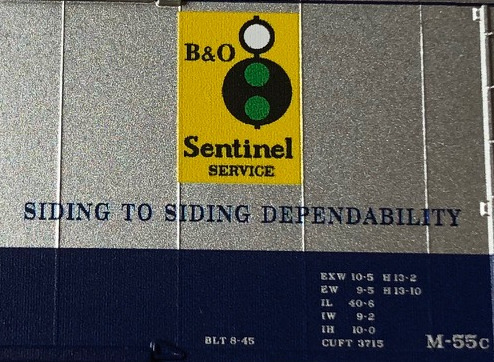
a long way, producing ultra-crisp logo and lettering.
The underframe has changed a lot! The die-cast metal floor is black with the vertical slants - a much more prototypical color. Now, instead of a single diecast metal part, they attached a one-piece black molded plastic underframe below the floor.

using a combination of diecast metal and molded plastic.
Plastic black wheels are again supplied but are of better quality and more prototypical looking without the deep flange. The trucks attached are prototypical correct National B-1 on the Santa Fe. The original 1972 release used Bettendorf trucks on all seven cars. The couplers are still truck-mounted.
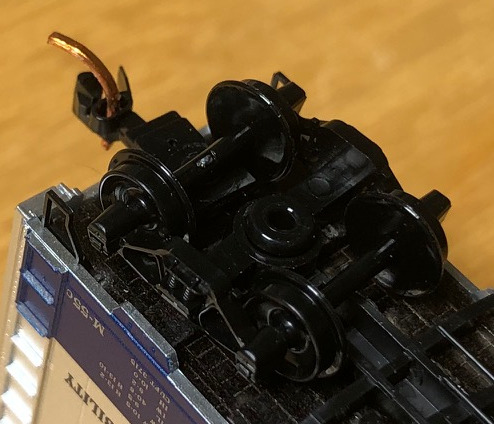
The new models use a much more sophisticated roof walk. The originals were a flat piece of plastic with grooves molded in to simulate the gridwork of a walkway. The new models use a much improved injection molding process which allows the manufacturer to make an actual grilled walkway.
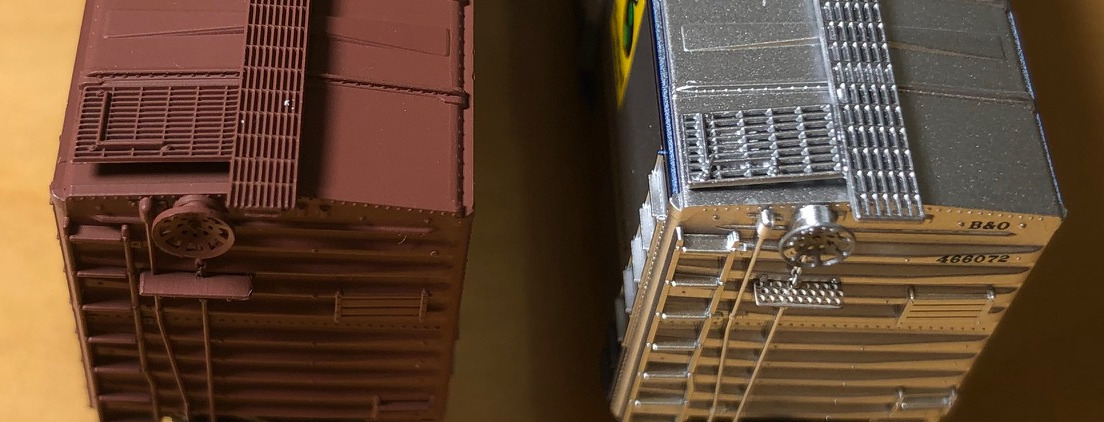
Sometimes change isn’t necessary - build something correctly, and with a few tweaks here and there, your product can last the test of time. The Edwards brothers created an N Scale hobby empire with their basic 20000 Series boxcar design. With a few interchangeable parts to offer a vast collection of variations and some modernization in quality control, the Kadee-Micro Trains Line 40’ Standard Boxcar has been a hobby staple for almost 50 years and will surely be cherished for years to come in our hobby of model railroading.
Click here for a link to the entire series

